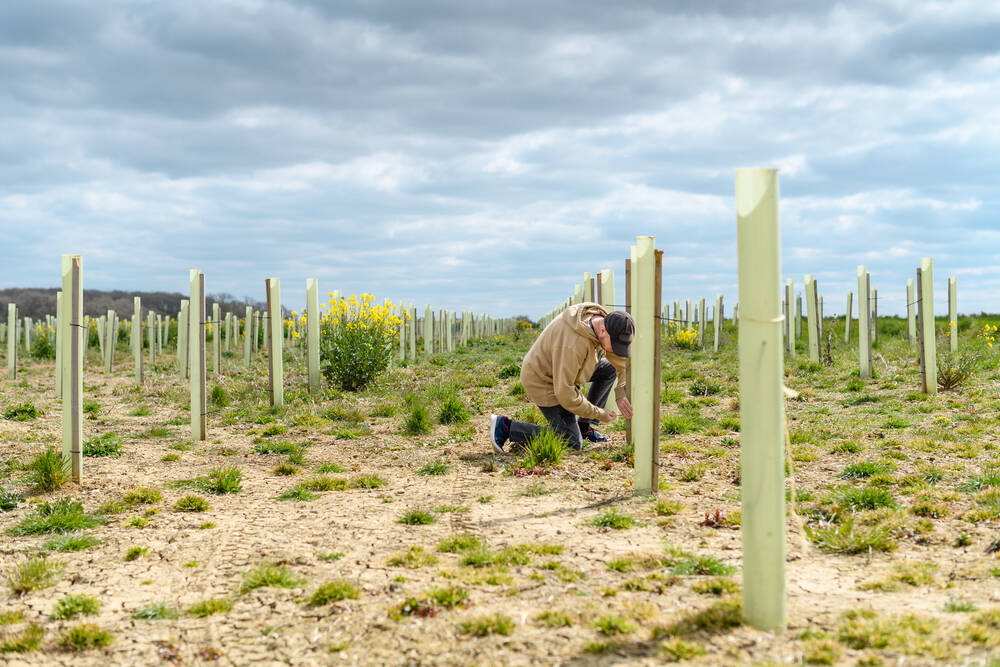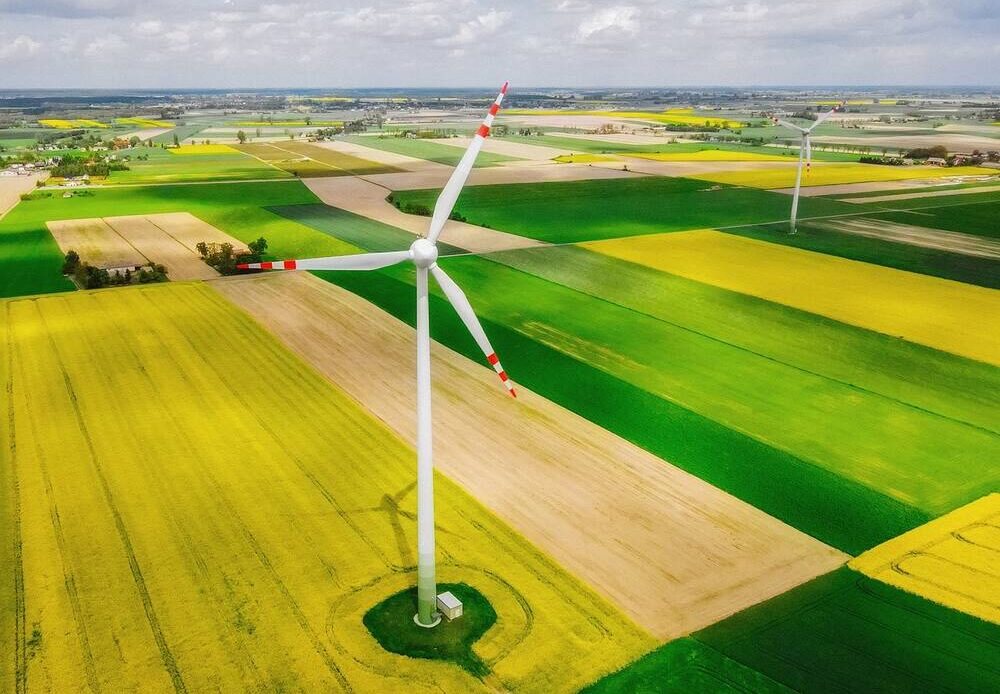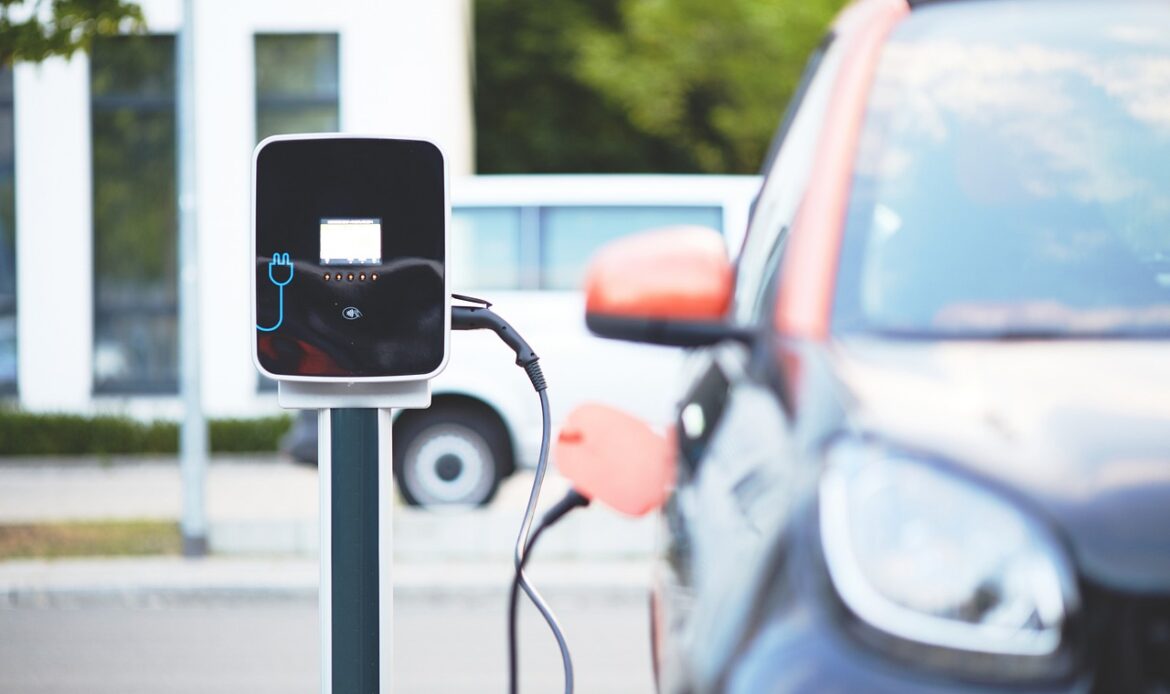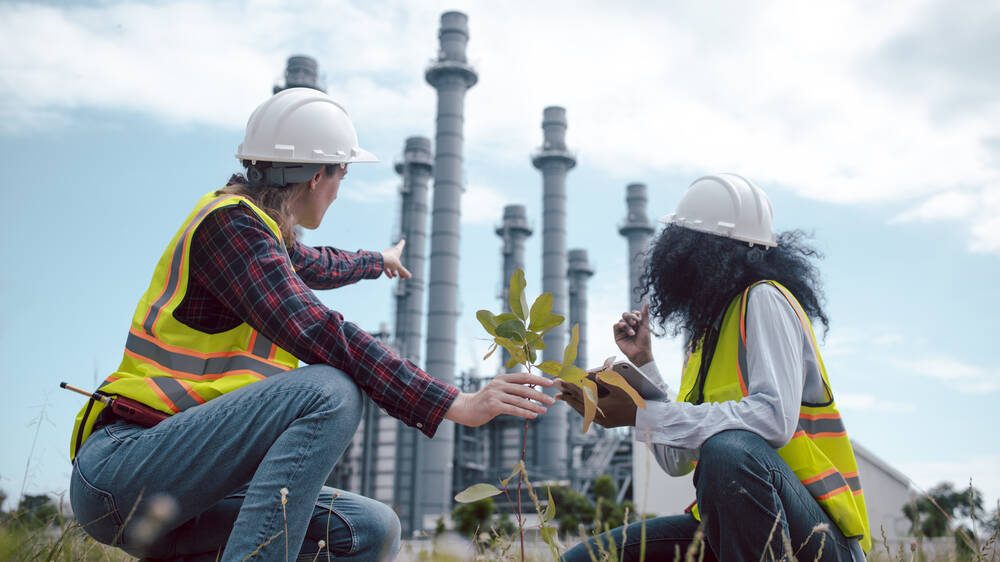As the world faces the growing threat of climate change, achieving net zero emissions is becoming increasingly urgent. One of the most effective ways to reduce carbon emissions is through carbon offset projects that promote carbon removal and emission reductions.
These projects, including renewable energy projects and nature-based solutions like forest management, offer a way to counterbalance carbon emissions by investing in carbon credits and carbon markets.
Whether through third-party certification or initiatives supported by the Kyoto Protocol, carbon offsetting plays a critical role in climate action, supporting local communities and the global push to reduce carbon emissions.
Nature-Based Offsets

Afforestation & Reforestation
The voluntary carbon market allows businesses and individuals to invest in carbon projects that contribute to the restoration of ecosystems, such as afforestation and reforestation, with many projects adhering to the Gold Standard for credibility.
Reforestation directly combats deforestation by planting trees in areas that have been deforested, giving the forest a chance to take over again. This can be government-led or community driven, and allows for the long-term production of resources while enhancing biodiversity.
Afforestation, on the other hand, is the planting of trees in non-forested areas, creating new ecosystems that can convert degraded land, such as brownfield sites, into productive biodiversity hotspots.
Both techniques require regular monitoring and maintenance to ensure that the development is successful over time, however this lessens when trees become more established in the intermediate ages.
Carbon projects, such as afforestation and reforestation, play a crucial role in increasing carbon stocks, while cap and trade systems provide an economic incentive for businesses to participate in carbon offsetting efforts.
Avoided Deforestation (REDD+)
REDD+ stands for Reducing Emissions from Deforestation and Forest Degradation.
There are many methods to offset emissions, such as investing in REDD+ Projects, which protect vulnerable forests from deforestation with legal frameworks, monitoring, and community engagement. A prolific example is the Katingan Mentaya Project, conserving around 157,000 hectares of Indonesian peatland forest.
One carbon credit from these natural-based solutions could cost between $6 and $12, allowing the company to both reduce emissions through reduction projects and improve its carbon footprint.
Moreover, many conservation agreements exist between communities or landowners that provide financial incentives in return for forest conservation. They can be monitored with satellite monitoring, such as Global Forest Watch, surveyed by drones, or recorded closely within carbon accounting models.
Soil Carbon Sequestration
Soil carbon sequestration is a significant example of carbon offsetting. It involves ditching traditional, environmentally-degrading, agricultural methods and incorporating sustainable land management practices.
Through processes such as no-till farming, agroforestry, grazing management or cover cropping, organic matter in the soil is increased, promoting healthy crops and carbon sequestration in the soil.
Wetland & Peatland Restoration
Wetland and peatlands are immense carbon stores, providing essential climate resilience, however have been drained for development and agriculture, or peat has been extracted for garden compost and fuel.
The environments can contain dozens of different habitat types as they lie within transitional zones between aquatic and terrestrial environments. Their diverse plant life, from floating and submerged species to tall trees and reeds, all form diverse habitats for wildlife.
Restoration projects are a fantastic way to offset emissions.
Agroforestry
Agroforestry is where trees are integrated with crops, shrubs and other livestock all in one habitat.
The deep roots of trees effectively stabilise the soil and retain large amounts of water. They further promote high levels of biodiversity by offering rich habitats alongside sources of food and shelter, supporting a more diverse food chain. The shade they offer creates microclimates, lowering temperature extremes for crops and animals.
Capturing more carbon than crops alone, trees planted through agroforestry offer solid opportunities for offsetting emissions.
Technology-Based Offsets
Direct Air Capture & Storage (DACS)
DACS works by a process of air capture, such as fans, taking in ambient air through fans with chemical sorbets or filters, separating the CO₂ with chemical reactions, releasing the CO₂ with pressure or heat through regeneration, and then storing the carbon deep underground.
DACS systems can be modular units the size of a shipping container, or all the way up to large-scale plants. They are an effective choice for carbon offsets, placed on smokestacks at emission-heavy sites.
Biochar Production
Biochar combines “biological” and “charcoal”. This living charcoal is an organic, sustainable source that offers many benefits to soil health and is widely used in regenerative agriculture.
Biomaterials go through pyrolysis where the oxygen is removed at a high temperature, triggering decomposition and resulting in biochar. The carbon is trapped inside in a stable form, effectively sequestering it for an extended period. Carbon credits exist on the carbon market.
Carbon Capture, Utilisation & Storage (CCUS)
CCUS technology is used in large industrial facilities such as cement plants and steel mills. The technology looks like a network of pipelines, absorption towers, and underground injection wells, working by separating and capturing CO₂ from emissions, then either using it in products like concrete, synthetic fuels, or carbonated beverages, or storing it deep underground.
Renewable Energy Offsets

Wind Energy Projects
The UK is one of the global leaders of offshore wind power with 44 wind farms and over 2,500 turbines in total. Wind turbines tend to consist of steel, fibreglass or resin and towers at 80-100 metres tall achieving rotor diameters of up to 120 metres.
While solar power is typically employed at a residential scale, wind power tends to fall under commercial projects requiring large-scale energy production. It’s an obvious choice for many offsetting their carbon emissions.
Solar Energy Projects
Solar panels have been feared in public perception for decades due to their cost, installation fees, and low efficiency. As tech has advanced, they have become much more accessible, reducing electricity bills and operating on a low maintenance cost once installed.
Government-led schemes in the 2010s such as Feed-in Tariff Scheme incentivised widespread adoption of renewables by offering monetary gain for self-generated electricity (starting as high at £43.3p per kWh).
Companies can offset their emissions directly by investing in solar energy projects.
Hydropower Projects
Hydropower is when electricity is generated using water such as river systems and dams. The currents of the water turn turbines linked to generators, hence the water’s kinetic energy turns into mechanical energy.
Human-made dams at a large scale could be a hundred metres high, such as the Hoover Dam in the US, Nevada, but in the UK, they tend to be smaller-scale river projects. Using water and entirely renewable, hydropower is a solid route for carbon offsetting.
Geothermal Energy Projects
Geothermal energy is heat from the Earth, so countries by the boundaries of tectonic plates like New Zealand or Iceland are optimal, however, the energy can also be produced across the UK. This happens in landscapes with granite rocks retaining heat that can be drilled deeply for extraction, such as parts of the Lake District, Scotland, and Cornwall.
For instance, Cornwall’s United Downs Deep Geothermal Power project plans to start producing power soon, predicted to power 6,000 homes.
Biomass Energy Projects
Biomass energy projects involve the conversion of organic materials (i.e. wood, plant or animal waste) into heat, fuel, or electricity. The process is largely carbon neutral, emitting equal parts carbon dioxide to the amounts the material has absorbed.
This saves materials from harmfully decomposing, giving them a secondary purpose, and making it a popular route for offsetting carbon emissions.
Energy Efficiency Offsets
Industrial Energy Efficiency Improvements
Industrial areas can be some of the most emission-intensive, and optimising energy efficiency where possible can slash masses of emissions. This could be improving insulation, upgrading machines, or swapping finite operations into renewables.
Many of these will be identified with carbon accounting software, and the easiest areas to target first, making a huge impact on monthly emission totals.
Residential & Commercial Energy Efficiency
After calculating residential or commercial emissions initial flags may suggest replacing outdated machines with energy-efficient appliances.
Simple swaps like automatic lights and equipment that turns off to preserve power can be bought.
Improving HVAC (heating, ventilation and air conditioning) systems which usually remain on can hugely save energy. Advanced controls such as smart thermostats can optimise performance, overall lowering emissions by reducing energy consumption, and decreasing reliance on fossil fuel and power generation.
Cookstove Projects
In comparison to basic cookers, clean cookstoves are a modern alternative designed specially to burn fuel efficiently and with less pollution. This can be achieved by improved combustion efficiency, thermal retention, fuel alternatives and solar power.
As a result, less CO₂, black carbon (a short-lived climate pollutant), and methane emissions are released, while the users are drastically less exposed to indoor pollution. Less fuel costs, less time collecting firewood, and less deforestation.
Emissions can be offset by purchasing cookstove credits. Payment goes to the project developers, funding stove distribution, covering logistics, production, and community training.
Waste Management Offsets
Landfill Gas Capture
Landfill gas capture looks like networks of pipes and wells, collecting gas, linked to energy generation units. This collects methane from decomposing waste, a potent greenhouse gas, rather than letting it pollute the atmosphere.
Not yet universally adopted, the technology is developing and mostly used by landfill operators or waste management companies.
Waste-to-Energy Projects
Waste-to-energy projects convert waste that can’t be recycled into energy, such as plastics or food waste, usually through combustion. Steam from this turns turbines, generating heat or electricity.
This is used by governments, high-waste industries such as manufacturing, and councils and governments. WTE projects encourage circular economies.
Composting & Organic Waste Management
In compost bins, high nitrogen is alternated with high carbon, promoting decomposition and leading to nutrient-rich compost. The compost can then be accessed year-round as a free source of sustainable fertiliser. It enriches soils, boosts beneficial nutrient cycling, and outcompetes harmful pathogens.
Organic waste management reduces methane emissions at landfills, utilised by businesses and organisations aiming to meet sustainability targets or regulations.
Transport & Mobility Offsets

Public Transport Improvements
Minor tweaks in public transport can lead to immense emissions reduction–notably in urban areas. By reducing private vehicles by optimising transport, widespread GHG emissions are cut.
For instance, 1000 people taking the same tube instead of 1000 separate cars being driven every day can have a significant impact on the environment in very little time.
Electric Vehicle Adoption
EVs are becoming increasingly accessible and mainstream. Compared to traditional combustion vehicles, they produce zero tailpipe emissions and tend to use electricity from renewable, cleaner sources.
All vehicles used by organisations, such as those delivering products, transporting staff, or providing services, should be swapped to electric vehicles to lower greenhouse gas emissions.
New policies and initiatives such as ULEZ (Ultra Low Emissions Zones), a daily charge for high-emission vehicles driving across London, have seen great success in encouraging EV adoption. The rate of ULEZ-compliant vehicles surged from 61% in Central London (2019) to 97% across Greater London in 2024.
Sustainable Aviation Fuel (SAF)
While traditional fuel is made from fossil fuels, SAF can be made from waste biomass, algae, cooking oil, and other renewable feedstocks.
SAF is blended up to 50% with regular fuel due to its chemical similarity and takes up less than 1% of global aviation fuel. Implementation strategies are being widely considered, with Neste’s a significant example.
As new carbon taxes such as the EU Emissions Trading System (ETS) are implemented across countries, the aviation industry must strive for SAF to outcompete conventional fossil jet fuel.
Blue Carbon Offsets
Mangrove Restoration
Mangroves can store up to 10 times the amount of carbon than forests, due to their high productivity, anoxic soil conditions, long lifespan, and complex root systems.
Their destruction on a major scale has contributed heavily towards the warming of the planet, as every metre of mangrove releases up to 1,000 tons of stored carbon per hectare into the atmosphere, where it remains for centuries.
Mangrove restoration is a cost-effective and natural method of carbon offsetting while preserving vital ecosystems.
Seagrass & Kelp Farming
As high CO₂ absorbers, kelp and seagrass effectively capture and store carbon and aid in mitigating global warming. The dense underwater meadows of the plants can store more carbon than land-based forests, making them an excellent choice for carbon offsetting. While less developed, pilot projects are showing success and paving the way for larger-scale adoption.
Coral Reef Conservation
Coral reefs are some of the best carbon sinks, as they absorb carbon through photosynthesis which over time helps sequester large amounts of CO2. As reefs have been damaged over time by overacidification from carbon emissions, causing coral degradation and bleaching, they are less effective for carbon sequestration.
Conservation initiatives are underway to ensure that the corals maintain healthy ecosystems, such as reef restoration, overfishing reductions, and protecting crucial areas. Nurseries and coral transplants encourage regrowth and allow for reef recovery and biodiversity restoration.
More Information
https://www.sciencedirect.com/science/article/abs/pii/092181819190117F
https://systemschangelab.org/industry/improve-industrial-energy-efficiency
https://www.sciencedirect.com/science/article/abs/pii/092181819190117F

